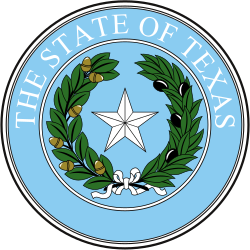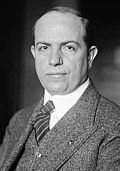| ||||||||||||||||||||
| ||||||||||||||||||||
 County results [1] Mayfield: 50–60% 60–70% 70–80% 80–90% >90% ContentsNo vote: | ||||||||||||||||||||
| ||||||||||||||||||||
| Elections in Texas |
|---|
 |
The 1922 United States Senate election in Texas was held on November 7, 1922. Incumbent Democratic U.S. Senator Charles Culberson ran for re-election to a fifth term, but lost the Democratic primary. [2] A runoff was held between former Governor Pa Ferguson and Railroads Commissioner Earle Bradford Mayfield.
In the runoff, Mayfield, a member of the Texas Railroad Commission defeated Ferguson for the Democratic nomination, then tantamount to election in Texas as a legacy of the American Civil War. Mayfield had the support of the resurgent Ku Klux Klan, and anti-Klan activists in the Democratic Party including George Peddy were unable to have him stripped of the nomination. [3] Peddy agreed to run against Mayfield as the candidate of the "Independent Democrats," members of the party who opposed the Klan. [4] [5] The Texas Republican Party also backed Peddy, but after a lengthy court battle, they were unable to have him included on the general election ballot as their official nominee. [6] Peddy ran on an explicitly anti-Klan platform. [5]
Peddy ran a write-in campaign as the candidate of the Independent Democrats and Republicans. [7] Peddy also ran with the endorsements of Senator Culberson and President Warren G. Harding. [6] [8] In the general election, he ran a surprisingly strong race and held Mayfield to a smaller margin than was usual for Texas Democrats, but Mayfield defeated him 264,260 votes (66.9%) to 130,744 (33.1%). [9] Mayfield performed especially well in cities where the Klan had a strong presence, like Dallas and Houston. [10] Peddy challenged Mayfield's election, and the subsequent Senate investigation prevented Mayfield from taking his seat as scheduled on March 4, 1923. [3] Mayfield assumed his seat on December 3, 1923, [11] [12] and was sworn in pending a resolution to Peddy's challenge, which was ultimately denied on February 4, 1925. [13]

